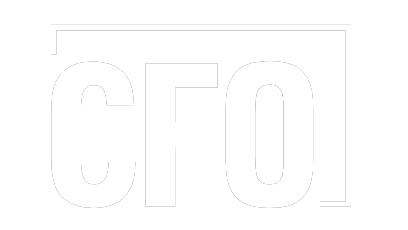Accordion's Quarterly Turnaround & Restructuring Market Update: Q2 2023
Accordion's Quarterly Turnaround & Restructuring Market Update | Q2 2023
The Accordion View
Credit markets were remarkably resilient in the first half of 2023, with weaker-rated credits staging an unexpected rally and significantly outperforming the broader market. The likelihood of a ‘capital R’ recession continues to diminish, though companies still face headwinds from rising rates, input inflation, and slowing economic growth. While a near-term spike in credit defaults seems unlikely given a manageable maturity wall through 2024, we expect a modest pick-up in distress and an ongoing high level of turnaround and restructuring activity as sponsors utilize dry powder to support existing portfolio companies.

Against the backdrop of increased interest payments, we are seeing a greater number of “Chapter 22” filings (a second Chapter 11 after a previous filing – for example, Avaya and David’s Bridal) where initial restructuring efforts were unsuccessful. We also continue to see the impact of COVID-related bloat; companies expanded their asset and human capital bases to meet COVID demand and became overly reliant on government subsidies. As sales have shrunk to pre-COVID levels, expense reduction has not followed suit, thus impacting profitability. Distress signals are developing in portfolios, and refinancing opportunities are becoming increasingly difficult in a more challenging new issuance market.
Interest coverage is the name of the game in this high-rate environment. The rise in base rates (Secured Overnight Financing Rate, SOFR) to 5.3% from near-zero levels 24 months ago is having a material impact on cash flow and liquidity coverage.
As a hypothetical example (see Figure 1): A private equity LBO in 2021 was priced with SOFR at 0.05% (the average rate in 2021). Assuming 5.5x leverage (Debt / EBITDA) and a SOFR + 650 loan spread, interest coverage would be ~2.8x at deal close.
Adjusting base rates to current levels—while leaving all other financials unchanged—would mean interest coverage has dropped to 1.6x. This mirrors drops in interest coverage seen both in the private credit market (BDCs) and leveraged loans. Even with EBITDA growth of 20% relative to deal close, interest coverage would drop to less than 2x as base rates flow through the P&L. The result? Liquidity is certainly tighter, and management teams may need to make strategic P&L moves to offset higher debt service.
Credit Market Update

High-Yield Bonds
US high-yield spreads sit at 379 bps at the end of July, according to the ICE BofA High Yield Index. This is below their long-run average (+560) and down materially vs. the same period one year ago (+483). While the new issue market remains open for higher-rated credits, lower-quality names may struggle to raise financing as the higher-rate environment makes debt capital too expensive to generate free cash flow. Issuance volume has been relatively weak and may remain so given the cost of financing – though companies may eventually be forced to tap the high-yield market out of necessity as maturity needs increase.
High-yield total returns through July 31 were 6.9%, with outperformance coming from a notable rally in weaker-rated credits (CCC Non-Distressed +10.2% YTD, CCC + 12.5%), as BBs returned only 5.4%. Distress ratios have been fairly muted, with only 7% of issues trading at distressed levels (high-yield spread > 1,000 bps, investment-grade spread > 500 bps), below the long-run average of 13%. While defaults have picked up over the last 12 months (2.4% LTM), they remain below historical levels (3.8% long-term average). Tightness in spreads and muted distress levels indicate that defaults should not trend meaningfully higher in the near-term — and with spreads inside of 400 bps, the market may be signaling a ‘soft landing’ is the most likely scenario.
Leveraged Loans
New issue single-B rated all-in spreads are approximately 475 bps, with total new issue yields of approximately 10.4%. Total returns on the Morningstar LSTA Leveraged Loan Index are +7.9% YTD, similarly driven by a rally in weaker-rated credits (CCC: +11.2%, B: +8.7%, BB: +5.8%). Defaults have modestly picked up, with the LTM default rate now at 1.7%, up from 0.3% a year ago and inching closer to the 10-year average of 1.9%. Distress levels have moved higher with 5.5% of loans now trading below 80% of par, above the 10-year average of 3.9%. Approximately $100 billion of leveraged loans come due within the next two years, ~50% of which are rated B- or lower. We expect defaults to increase somewhat throughout the remainder of 2023 as refinancing needs increase, CLO demand remains muted for lower-rated credits, and issuers begin to feel a full-year cycle of higher base rates.
Private Credit (BDCs)
Private credit fundamentals have shown resilience against the backdrop of higher rates and macroeconomic pressures.
- Ares Capital Corporation (ARCC, the largest publicly-traded BDC) reported underlying portfolio company LTM EBITDA growth of 7% in 2Q23, in line with historical levels. Weighted average interest coverage was nearly flat vs. the prior quarter, though unsurprisingly down year-over-year (1.6x in 2Q23 vs. 2.4x in 2Q22).
- The public Blackstone BDC (BXSL, Blackstone Secured Lending Fund) reported year-over-year EBITDA growth of 12% in 2Q23.
- The Golub Capital Altman Index (GCAI: an index measuring median revenue and earnings growth for 110-150 portfolio companies in the Golub Capital portfolio) reported year-over-year revenue and earnings growth of 4.3% and 4.5% in 2Q23.

Figure 3. Source: Public filings. Dataset composed of ARCC, BXSL, FSK, GBDC, and OBDC. Non-weighted average.
“Credit quality has been stable and inflationary pressures have begun to show some easing.” – Kipp DeVeer, CEO, Ares Capital Corporation
On the credit quality front, we also have not seen a sharp increase in non-accruals. On average for the five largest BDCs, non-accruals fell to 1.9% of cost in 2Q23 (previously 2.2%). Credit issues year-to-date have generally been less than expected, with subdued performance-related amendment activity and covenant breaches—implying that borrowers may currently have a sufficient handle on the higher interest burdens from the rise in base rates, but may face strain going forward from sustaining higher debt service requirements.
Restructuring
Restructuring mandates are on the rise, both internally at Accordion and at publicly-traded boutique investment banks. Houlihan Lokey (HLI), for example, reported 30 restructuring fee events in 2Q23—up versus both 2Q22 (16) and COVID (Jun-20, 29) fee events. The focus remains on liability management, given higher interest costs (driven by the steep rise in base rates) and a looming maturity wall following record debt issuance levels in 2020 and 2021.

In contrast to the Great Financial Crisis and COVID, this acceleration in restructurings is not the result of an isolated circumstance causing liquidity, demand or underlying business health to fall dramatically. With more strength in underlying operations, albeit buffeted by many factors – inflation, labor market shortages, supply chain disruption, and geopolitical instability, to name a few – this cycle’s distress is likely to be driven by the balance sheet, not profitability.
“This restructuring cycle has legs, and we expect our level of activity to remain elevated for some time to come.” – Paul Taubman, CEO, PJT Partners
Accordion’s Turnaround & Restructuring professionals see a solid outlook for the restructuring environment for the remainder of 2023 and into 2024. At the margin, higher interest burdens from the rise in base rates will likely push weaker borrowers into difficult conversations with stakeholders. This situation, combined with a tighter financing market and increased refinancing needs, should drive higher restructuring activity in the near to medium term. Against a tougher macroeconomic backdrop, companies will need to focus on transformation and adjust underlying operations to maintain sufficient go-forward liquidity.
Bankruptcies

Bankruptcy filings through the first seven months of 2023 exceeded full-year filings in 2022 and are almost in line with full-year 2021 filings. Additionally, year-to-date filings represent the highest quantity through July of any year over the last decade except for 2020 (a period impacted by COVID).
The highest concentration of bankruptcies has been in consumer discretionary (12% of YTD filings), industrials (11%), and healthcare (10%). We expect these sectors to continue to drive filings, as will growing disruption in real estate.
Additional Sources:
1) Pitchbook LCD.
2) S&P Capital IQ. Filings data limited to public companies or private companies with public debt where assets or liabilities at time of filing are $2m+, or private companies where assets or liabilities at time of filing are $10m+.







